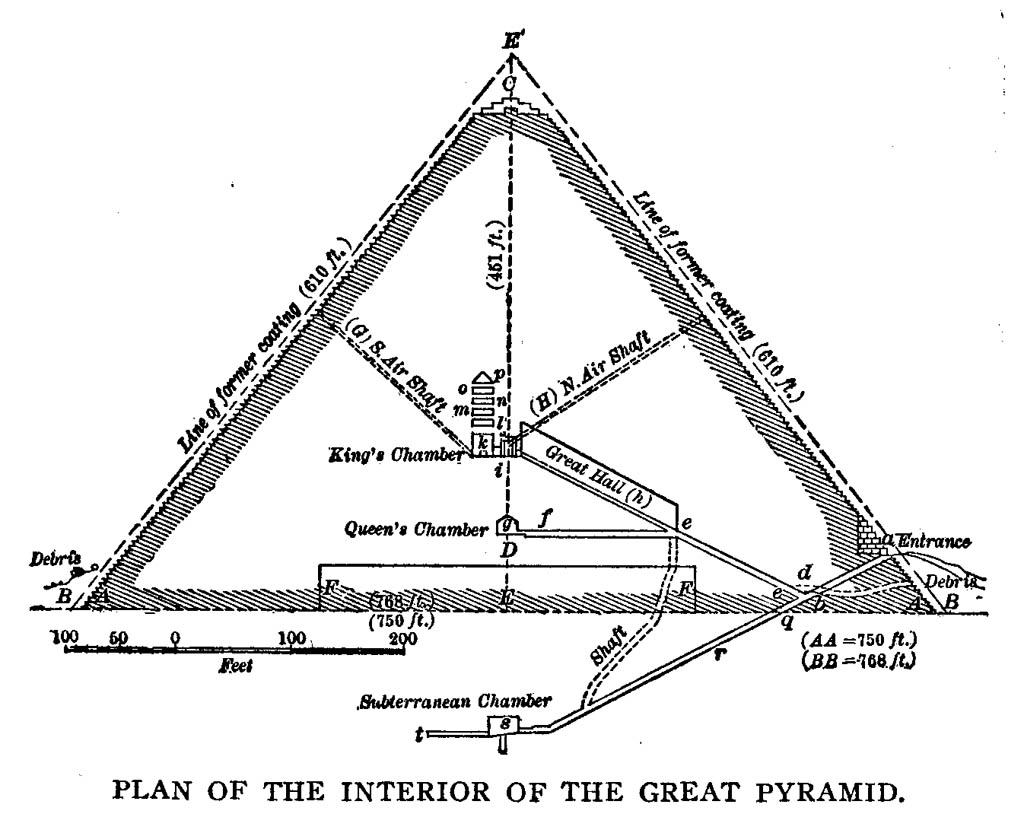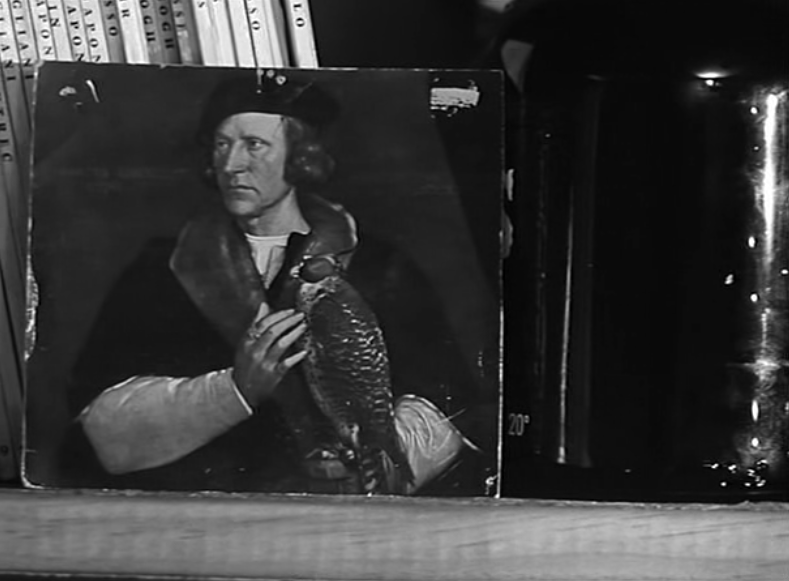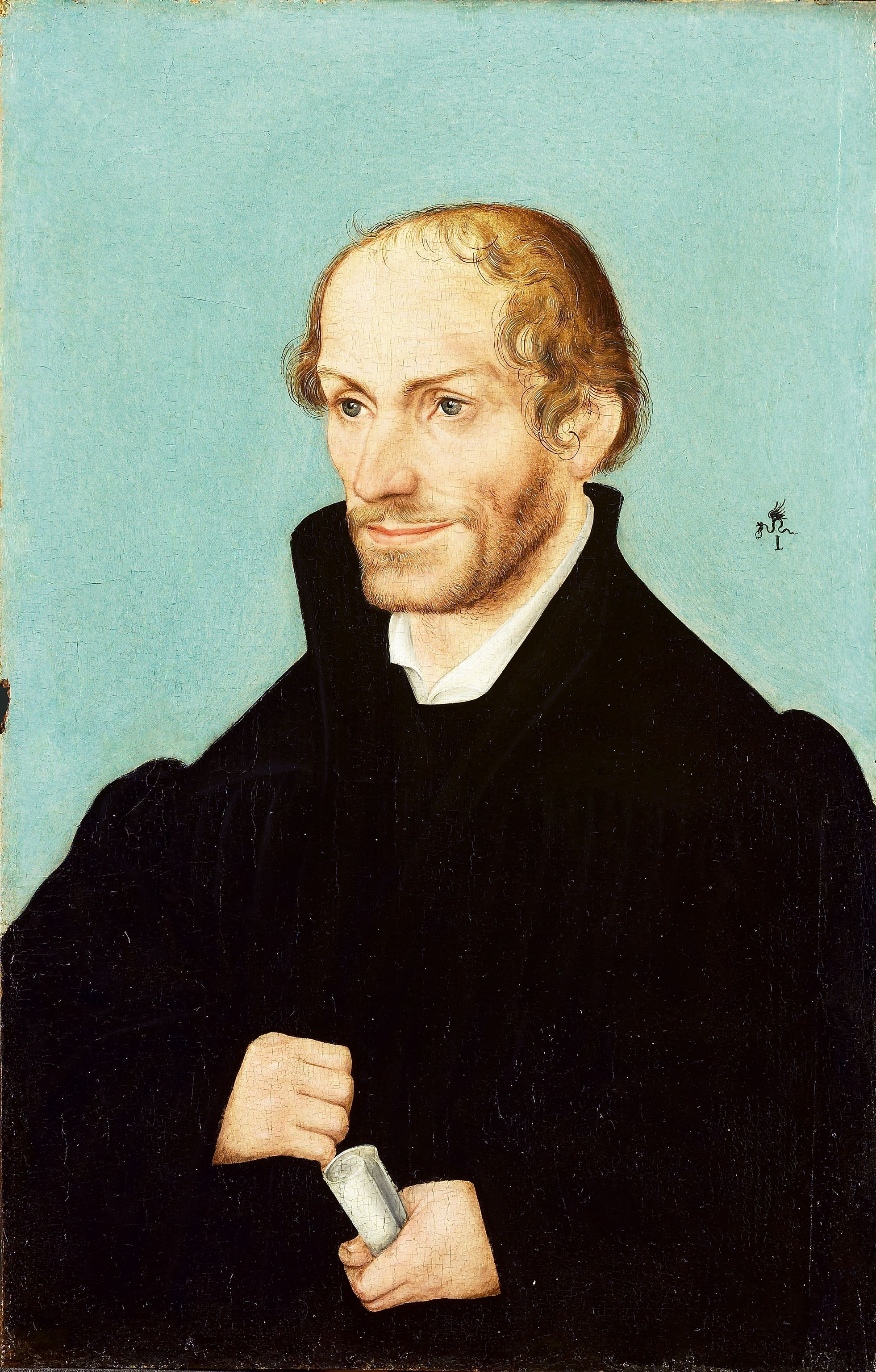Not to be Introduced
Portraits of Georges Perec, Edward James and others.
You watch the film again. You spend time in that high apartment, like the top room of a tower, and have certain sympathies with the silent, unnamed young man. You know that the film, directed in 1974 by Bernard Queysanne, is based on a screenplay adapted by Georges Perec from his own novel, translated into English as A Man Asleep.1

1 Perec, G. (1999) (trans. Leak, A.) A Man Asleep. London: The Harvill Press
You notice that the apartment is decorated with a number of images. Your recollection of the novel is that no such images are described, yet here they are, prominently displayed. Some images you recognise, some you do not. You spend time thinking about them as a specifically curated collection of reproductions.
As you listen, you feel that the voice of the film comes through as a disconnected yet acute commentary in the second-person. If there is a neutrality to this voice, not only does not it not belong to any obvious subject but it appears curiously object-like.2
2 The film voiceover is spoken by a woman, played in the original French by Ludmila Mikaël, marking a deliberate distinction to the male figure seen on screen.
You explain this to yourself as it being akin to a surreal emanation from objects, even images, like the running commentary offered by paintings to the viewers that pass them by. You admit that the voice is perhaps alienated by the unattributed citations from Kafka, Melville, Dante, Joyce and so on, distributed throughout the text like pictures pasted into a manuscript.3
3 Bellos, D. (1999) Georges Perec: A Life in Words. London: The Harvill Press, 361.
You understand the narrative of A Man Asleep, such as it is, as an account of the systematic acquisition of indifference. Although it may not be directly autobiographical, you feel the film (and book) performs a retrospective catharsis for Perec, as if he were attempting to “recover a particular period in [his] life” through a process of re-enactment—a scenario that is all the more apparent in the staging of the film.4

4 Quoted in Bellos 1999, 345.
You consider your thoughts on re-enactment and the novel as a rewriting of ‘Bartleby the Scrivener’. Although it is not clear to you whether the set is an exact reconstruction, it seems likely that the film’s main location is based upon a specific address in Perec’s early life: 203 Rue Saint-Honoré. Efforts were made to get certain details correct. According to Perec’s biographer David Bellos, the young director had to explain to the novelist how film productions worked, including the dressing of sets. Props were either “bought, borrowed (...) already to hand (...), asked for, accepted” and so on.5
5 Ibid., 520.
You imagine Perec grasping this opportunity with relish, making the most of the chance to insert images into each frame, perhaps being faithful to a previous décor or establishing a composite with another purpose in mind.
Soon you will think of these images as a repeated series of portraits, but for now see them in relation to the possession of space, as if they were part of a method of laying claim to a staged cinematic domesticity. You recall Perec, in Species of Spaces (also in 1974), accounting for a spectrum of space, from that of the book to the bedroom, the apartment to the edge of outer space. He asks directly what it means to live in a room; whether space can be strategically possessed through images—for example, having “drawing-pinned to the wall an old postcard showing Carpaccio’s ‘Dream of St. Ursula’”.6

Carpaccio - The Dream of St Ursula (1495)
Tempera on canvas, 274 x 267 cm, Gallerie dell’Accademia, Venice.
6 Perec, G. (1997) (ed. and trans. Sturrock, J.) Species of Spaces and Other Pieces. London: Penguin, 24.
You bring that painting to mind and see a well-lit bedroom, the saint neatly asleep in the canopied bed. A variety of openings appear in the background, various nested sets of doors;7 a fake-looking window sits behind pots of myrtle and carnation; an angel steps in from the right, a spray of light at its feet pierced by a thin needle of shadow. Crucially, you visualise the small reading (/writing) table, set out and ready, evoking John Ruskin’s description of Ursula as an “industrious (...) workwoman as much as a princess”, displayed by her “trim” room and the condition of her reading material.8
7 Which bring to mind Marcel Duchamp’s address at 11 Rue Larrey, or even the nested spaces within Velazquez’s Las Meninas, another painting important to Perec.
8 Ruskin’s comments appear in one of a series of pamphlets (1871-1884) aimed at working men and labourers, with whose working conditions he sympathised: Ruskin, J. (1872) ‘On Carpaccio’s Dream of Saint Ursula’ in Fors Clavigera. Sunnyside, Orpington, Kent.
These are sentiments that would have appealed to Perec, you think. Following this thought, you seek out Perec’s description of Antonello da Messina’s St Jerome in his Study, again from Species of Spaces, but under the subheading of ‘The Conquest of Space’. You think Jerome’s study altogether more curious. It constitutes a manufactured space within a space, a platform without enclosing walls or ceiling positioned inside a cathedral vault. The Saint is depicted in the act of reading, seated at his workstation and surrounded by the equipment of research.9

9 Evidence of Jerome’s translating work is on display, the space is lived-in, everything is in its right place. There is even a cartellino attached to the platform, a depiction of a creased paper label used by the painter to assert his own identity through signature.
His strange dias, like modular MDF furniture, seems to extrapolate further out of view, filling the nave with a network of cubbies and shelving units. You read that Perec makes clear that “(t)he whole space is organised around (this) piece of furniture (and the whole of the piece of furniture is organised around the book).”10
10 Perec 1997, 88
Jerome’s book-based sanctuary has a transformative power for Perec. It is able to conquer or cancel out the hostile space of the cathedral beyond. You realise that it is not difficult to think of the room in A Man Asleep as a similarly protective shell, with the young man also being “surrounded by the uninhabitable”.11
11 Ibid.
Yet in relation to the depiction of the room on Rue Saint-Honoré, you think of another crucial section from Species of Spaces, one which comes under the subheading of ‘A Space Without a Use’. Here Perec describes his failed attempts to “follow (...) through to the end” the idea of an “absolutely and intentionally useless” room that would “serve for nothing, relate to nothing.12
12 Ibid., 32-33.
His attempts at conceptualising this functionless space are accompanied by a mass of references, both visual and textual: mention of Tolstoy’s Prince Bolkonsky ceaselessly searching rooms for somewhere to sleep; the church interiors of Dutch painter Pieter Saenredam; the Great Pyramids, and so on.13

13 Here Perec could be thinking of the the weight-relieving spaces placed above the burial chambers, distributed voids in the centre of the pyramids; however, whilst these spaces might be broadly inaccessible, they do have a clear purpose.
There are also direct references to etchings by Escher and paintings by Magritte. These names, you realise, make the paragraph vital to your understanding of the film-set of apartment 203. But you wonder whether you need consider the set as a functionless space in itself or as an appeal to one—an appeal that will no doubt go unanswered.
In your view, the dominant image inserted into the apartment is actually something of a cliché; a poster of René Magritte’s La Reproduction Interdite (‘Not to be Reproduced’) from 1937, now symbolic of an alienation suited to countless teenage bedrooms.14

14 Magritte’s source for the portrait was his own photograph of James standing in front of his 1929 painting On the Threshold of Liberty.
Yet its presence in the film is frequent—the young man is often seen propped up on the pillow, a book open on his lap, aligning his head with the pair that are turned the other way. A sense of identification, however disavowed, is clear in the receding series. You know that Magritte’s painting is a portrait of wealthy English poet and patron Edward James, one of a number of canvases commissioned during the painter’s stay in his London home. Such patronage was not uncommon for James, one of the earliest advocates of surrealism, who forged strong friendships with Salvador Dalí and Leonora Carrington, as well as sponsoring journals, books, theatre and ballet productions. As a portrait is may be conventionally refused, yet you also wonder whether it may be all the more effective as a depiction of disconnected character.15
You do not find it difficult to understand why Perec would have been interested in such an uncanny image, yet you also consider whether there might be more to the repeated presence of James, as if he were more than an anonymously doubled figure in a reconstituted room. The eccentricities of James’ life may well connect to Perec’s reclaimed living space—particularly the appropriated portraits dotting its walls—in other ways.
In the script Perec quickly establishes thoughts of a doppelgänger, describing the young man’s a “conscientious double.”16
16 Perec 1999, 138.
His disengagement is quickly objectified in this projected (rather than reflected) other; an odd form of self-portraiture that allows his withdrawal to take hold. And you know the mirror is a device that runs through Perec’s writing, with countless effects of doubling, copying, transference, inversion and so on. Yet referring to another of his favourite painters, Perec writes that “[Paul] Klee appears [to me] as a mirror; he gives no explanations”, as if the looking-glass image were something that mechanically reflects but does not explain itself.17
17 Cited in Bellos 1999, 212.
Yet you wonder if Magritte’s mirror-space actually presents a perverse form of explanation.18
Then there is the salient detail of Edgar Allen Poe’s novel, The Narrative of Arthur Gordon Pym of Nantucket, being placed on the mantlepiece. Published a century before the portrait was completed, the novel is Pym’s account of a sea voyage to the South Pole. Yet the novel’s self-reflexivity is paramount: Pym repeatedly emphasizes that he is the real author of the book and not his editor ‘Mr. Poe’, as some people claim. Poe’s play on authorship status and his capacity for sharply drawn ambiguities make him a kindred spirit for Magritte, yet Poe’s connections to Perec and the OuLiPo also stem from his own theoretical concerns for literary constraint and its status in writing.19
19 Morisi, E. C. (2008) ‘The OuLiPoe, or Constraint and (Contre-) Performance: “The Philosophy of Composition” and the Oulipian Manifestos’ in Comparative Literature , vol 60 , no. 2, 108.
Poe’s essay, ‘The Philosophy of Composition’, retrospectively outlined the manufacture of his famous poem ‘The Raven’, arguing for a method of rigid consequence and laborious constraint. Yet the more specific reference to Magritte’s mirrored depiction of Edward James comes from an episode in the novel when the expedition has arrived in the polar regions and the tribal leader of an encountered island people is terrified by his reflections in a pair of mirrors in the ship’s cabin.20
20 “There were two large mirrors in the cabin, and here was the acme of their amazement. Too-wit was the first to approach them, and he had got to the middle of the cabin, with his face to one and his back to the other, before he fairly perceived them. Upon raising his eyes and seeing his reflected self in the glass, I thought the savage would go mad; but, upon turning short round to make a retreat, and beholding himself a second time in the opposite direction, I was afraid he would expire upon the spot. No persuasion could prevail upon him to take another look; but, throwing himself upon the floor, with his face buried in his hands, he remained thus until we were obliged to drag him upon deck.” (Poe, E. A. (2008 edition) [1838] The Narrative of Arthur Gordon Pym and Related Tales. Oxford University Press, 133)
You don’t believe that James was being portrayed as the uncultured ‘savage’ by Magritte, even though the privilege of James’ upbringing would prove a constant handicap in his attempts to be considered a serious poet or artist. What is more interesting to you is how the types of reversal and regress produced by facing mirrors might embody an enfolded space that is without use or that does not ‘introduce’ any explanation. You then recall that scenes involving mirrors appear throughout the film: tilted planes of cracked glass produce a close-up where the young man’s face is horizontally bisected; multiple versions of his head repeat into the distance during a sequence filmed in a wall-mirror wholesaler’s stockroom.21
21 Bellos 1999, 520.
You recall that the young man sees in the mirror above the sink a “somewhat bovine reflection”, again without possible extemporisation, where the face in the glass is “simply that, like a cow, like a stone or water, it doesn’t have anything in particular to say to you.”22
22 Perec 1999, 215.
Yet the walls and ceiling are just as much sources of imagery as the mirror above the sink. Within his apartment, the young man searches for a “concealed exit, the hidden button that will make the walls swing back or the ceiling lift off”. This instantly reminds you of Cocteau’s cinematic Poet who, at the behest of a (sleeping) statue, passes through the surface of a mirror only when he can find no conventional exit.23

23 Perec 1997, 147. The scene described is from Cocteau’s 1932 film, Blood of a Poet (France: Vicomte de Noailles).
But the ostensibly plain of walls and ceilings connect to the escapes of art history in Perec’s mind, being irresistibly connected to galleries, as if their appearances could be interchangeable and compelling: “to look at paintings (...) as if they were bits of wall or ceiling, and how to look at the walls and ceiling as if they were paintings.”24
24 Perec 1999, 164.
Amid the accounts of visions staged within the apartment—of panther’s heads and moving stars that eventually explode25—Perec’s writes of another face that emerges from the “shadows and blisters in a portion of the ceiling”.26 This is a face that is “grim (...) attentive”, with an “ambiguous smile” and a trace of a scar on the upper lip.27
25 Which puts you in mind of The Pleasure Principle, another 1937 Magritte portrait of Edward James, in which the poet’s face is obscured by a globe of light.
26 Ibid., 173.
27 Ibid., 162.
You know this is a reference to Antonello da Messina’s Portrait of a Man known as ‘Il Condottiere’ (The Warlord), a painting that features in almost all of Perec’s work in some form or other.28

28 Ibid., 162.
In the film-set the reproduction is loosely attached to the wall above the bookcase and radiator. Perec’s identification with Messina’s subject is deeply ingrained and partially based on physical resemblance: the bulging eyes, the scar mirroring the one Perec acquired during childhood. The casting of the film’s main actor was itself determined by a scar above the mouth.29

29 Perec, G. (1978) (trans. Bellos, D.) W: A Memory of Childhood. London: Panther, 109.
You recognise the Warlord’s energy and brutality, partially understanding Perec’s fascination. More than that, you begin to see his attachment to the painting in relation to other portraits, as if an identification were somehow distributed amongst them. For Perec describes The Warlord in relation to three other men in a paragraph from his first novel, only recently published as Il Condottiere.
He explains how nothing can be anticipated, imagined or added to The Warlord’s presence, emphasising the powerful restraint of his gaze and its domination of all others.31
31 “Le Condottière ne bouge pas: on ne peut rien pressentir, on ne peut rien imaginer, on ne peut rien ajouter à sa présence. Le Melanchton de Cranach balance entre l’intelligence d’un regard, la finesse d’un sourire, la fermeté des mains: tel est le politique; l’homme de Memling est un sanglier qui prie, une chevelure hirsute, un coup large. Le Robert Cheseman de Holbein n’a que la morgue d’un seigneur, le luxe lumineux du costume, la simple intelligence du veneur. Le Condottière est toujours plus que cela. Il les regarde tous les trois. Il pourrait les mépriser, secrètement ou ouvertement. N’importe lequel d’entre eux, un jour ou l’autre, pourra avoir besoin de lui. Il ne les méprise pas, ce serait déjà s’abaisser et sa position est trop forte [...]”
[Perec, G. (2012) Il Condottierre. Paris: Seuil, 178-179]
Soon enough, you realise that this exchange of glances is being enacted within the film-set: the first painting, a Lucas Cranach portrait of church reformer Philip Melanchton, appears as a small postcard reproduction tucked into the door jamb.32

Perec describes the depiction as hovering “between the intelligence of a gaze, the delicacy of a smile, the firmness of hands”, a crystallisation of a political character by the most minimal means. The second painting appears as a battered reproduction seen in close-up against a shelf of books: Hans Holbein’s portrait of Robert Cheseman, Member of Parliament and falconer to King Henry VIII. Perec notes the arrogance of Cheseman’s gaze, contrasting his extravagant costume with the “simple intelligence” of the huntsman.33
The one portrait that is missing from Perec’s congregation is Hans Memling’s Portrait of a Man with a Roman Coin.34

34 Hans Memling - Portrait of a Man with a Roman Coin (c.1480), Oil on panel, 31 x 23.3 cm, Royal Museum of Fine Arts Antwerp
Yet you do notice, as you are thinking about this, that there are marks on the wall above the young man’s bed that indicate the corners of an image that is now missing: dots that look like circles of adhesive.35


35 Another missing image is explained by David Bellos as a compromise made by Perec when the original choice of an advertisement for BAE was replaced by a poster for Air Tunis that Perec had on the wall of Rue Saint-Honoré. It is possible to speculate on this missing image, might it be the rather Magritte-like image of Notre-Dame? The odd image of a flaming sink that appears in the final moments of the film (just prior to images of ransacked bedroom and a horse being killed) is another echo of Magritte’s iconography.
Your attention is then diverted above, to the poster reproduction of Escher’s lithograph, Relativity (1953), printed with an extended margin at the bottom. Escher’s print depicts an architectural space with no single gravitational anchor; walkways, staircases, arches and patios, combine according to different orientations. You notice that the scene is calm and that one figure, just left of centre, has a book open on its lap.
Again you return to Perec’s comments on functionless spaces and his citation of a science-fiction story in which the “notion of habitat has vanished”. It is here that you begin to think of Edward James’s withdrawal into the Mexican jungle in the 1940s, where he largely remained until his death in 1984. Just outside the small village of Xilitla, James established the gardens of Las Pozas (‘The Pools’), a vast array of surreal concrete structures and illogical buildings that emerge from the rainforest like ruins. When Perec cites Jorge Luis Borges’ story ‘The Immortal’, where ”men no longer inhabited by the need to live and to die have built ruined palaces and unusable staircases”, it seems a direct description of the inverted steps and severed balustrades that make up James’ monument to the surrealist imagination.36

36 Perec 1997, 34.
Borges’s narrator describes a metropolis that “abounded in dead corridors, high unattainable windows, portentous doors which led to a cell or pit, incredible inverted stairways whose steps and balustrades hung downwards. Other stairways, clinging airily to the side of the monumental wall, would die without leading anywhere, after making two or three turns in the lofty darkness of the cupolas.” [Borges, J-L. (1972) (trans. Irby, J. E.) ‘The Immortal’ in Labyrinths. London: Penguin Modern Classics, 135-149, 141]
Borges’s narrator describes a metropolis that “abounded in dead corridors, high unattainable windows, portentous doors which led to a cell or pit, incredible inverted stairways whose steps and balustrades hung downwards. Other stairways, clinging airily to the side of the monumental wall, would die without leading anywhere, after making two or three turns in the lofty darkness of the cupolas.” [Borges, J-L. (1972) (trans. Irby, J. E.) ‘The Immortal’ in Labyrinths. London: Penguin Modern Classics, 135-149, 141]
Inspired in part by the Ideal Palace of Ferdinand Cheval (built between 1879 and 1912) and the Watts Towers in Los Angeles (built by Simon Rodia between 1921 and 1954), the founding of Las Pozas in Xilitla resulted from James’ attempt to establish the Eden-lie sanctuary he had been seeking all his life—ceaselessly commissioning large-scale dwellings and impossible follies with various architects and artists—the compulsion to establish place, or home (however irrational or useless it might be), is what persists.37

37 Including Pedro Friedeberg’s design for a ‘Tower of the Holy Spirit’ at Cape Dodecahedron, Colima, Mexico in the 1960s.
Only now do you think of the strangest image cited in Perec’s list: the “gigantic Skinner’s Box”, a chamber in which laboratory animals suffer behavioural conditioning. Yet when Perec imagines a blacked-out room, with a lone ‘operandum’ recording behaviour via the appearance of a Maltese cross on the wall, you wonder whether this is a general indication of intensity, or withdrawal, or if it is a deliberate echo of Nazi insignia. You then consider how the film-set images could be equivalent to buttons recording a subject’s actions, either as he seeks to receive nourishment or acts in response to stimuli. With the half-buried reference to his losses in World War II, Perec would connect domestic space—especially an impossible reconstruction—to his search for roots. You realise that reading and writing are at the heart of this appeal to something like a “statute of the inhabitable”, but conclude to yourself that room should always be set aside for the power and placement of portraits; of images.38

38 Perec 1997, 35.
Written for Species of Spaces: Transdisciplinary Approaches to the Work of Georges Perec, Teesside University, 2014.